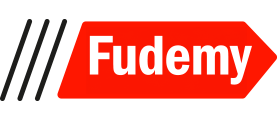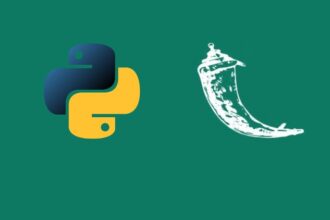What
You’ll Learn
You’ll Learn
- Master the basics of Flutter
- including setting up your environment and building your first app.
- Work with essential Flutter widgets and layouts to create responsive UIs.
- Implement asynchronous programming with FutureBuilder and manage state efficiently.
- Develop interactive UI components such as buttons
- input fields
- tooltips
- and navigation elements.
- Build advanced features like login pages
- calculators
- and to-do lists.
- Gain experience with Flutter animations
- custom styling
- and project structuring.
- Create real-world Flutter projects
- covering the complete app development lifecycle.
Requirements
- Basic knowledge of programming (preferably in Dart
- JavaScript
- or a similar language). Familiarity with object-oriented programming concepts. A computer with Flutter and Dart SDK installed (installation instructions will be provided in the course).
Description
Course Introduction
This comprehensive course is designed to take you on a journey through the exciting world of Flutter, a powerful framework for building beautiful, natively compiled applications for mobile, web, and desktop from a single codebase. Whether you are just starting with Flutter or looking to enhance your skills to an advanced level, this course covers everything you need to become a proficient Flutter developer.
With a blend of theoretical explanations, practical examples, and hands-on projects, this course is structured to cater to beginners, intermediates, and advanced learners. Each section is meticulously crafted to help you build a strong foundation in Flutter, gradually progressing to more sophisticated app development techniques and culminating in real-world projects.
Section 1: Flutter – Beginner Level
This section serves as your introduction to the Flutter framework. You’ll start with the basics, such as setting up your Flutter environment, understanding the Flutter architecture, and learning how to create your first simple Flutter application. You’ll explore essential widgets and layouts, working through examples that demonstrate how to create interactive user interfaces. Lectures focus on FutureBuilder for asynchronous programming, using different button types, and building tile pages for dynamic content. By the end of this section, you’ll be comfortable with input handling and creating responsive layouts, setting a strong foundation for more advanced concepts.
Section 2: Flutter – Intermediate Level
Building on the basics, the intermediate section dives deeper into more sophisticated widgets and functionality. You’ll learn to implement tooltips, placeholders, swipe actions, and custom widgets like radio buttons and checkboxes. The section also covers creating sleek and functional UI components like Floating Action Buttons, Index Stacks, and AbsorbPointers. You’ll gain hands-on experience in developing splash screens and profile pages, enhancing your apps with engaging user experiences. By the end of this section, you will be skilled in using Flutter’s intermediate components to build polished, user-friendly applications.
Section 3: Flutter – Advanced Level
In this advanced section, you will tackle complex app components and functionalities. You’ll master creating complete login pages, build a simple calculator app, and develop features like home screens and to-do lists. This section emphasizes the use of advanced widgets like TextFormField for form handling, image manipulation, and state management techniques to ensure your apps are efficient and scalable. With the skills gained here, you’ll be able to handle complex application requirements and optimize for performance and user engagement.
Section 4: Flutter Project
The final section is project-based, allowing you to apply everything you’ve learned throughout the course. You’ll build a complete Flutter application from scratch, exploring advanced concepts like navigation, state management, custom animations, and integrating third-party libraries. The project covers building apps with Material Design, implementing menus, scaffolds, custom AppBars, and sophisticated UI components like Slivers, animated icons, and Cupertino-style elements. By completing this project, you’ll not only solidify your Flutter knowledge but also have a polished portfolio piece to showcase your skills.
Course Conclusion
By the end of this course, you will have gained a solid understanding of Flutter, from the foundational concepts to advanced app development techniques. You’ll be capable of building fully functional, beautiful applications that can run seamlessly across multiple platforms. Whether you’re looking to kickstart your career as a Flutter developer, improve your existing skills, or develop your own apps, this course will equip you with the knowledge and hands-on experience needed to succeed.
Who this course is for:
- “Beginners: If youre new to Flutter or app development
- this course starts from the basics and gradually builds your skills.”
- Intermediate Developers: Perfect for those with some experience in Flutter looking to enhance their skills with intermediate and advanced techniques.
- “Experienced Developers: Even if youre already familiar with app development
- this course covers advanced Flutter features and projects to help you master the framework.”
- “Mobile App Enthusiasts: If youre passionate about creating mobile apps and want to explore a new framework
- this course offers hands-on projects that will boost your confidence and skills.”






